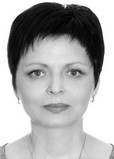Combined effects of neck muscle trainings and central nervous system electric tranquilizing tools on static-kinetic balancing skills of fast-moving system operators
Фотографии:
ˑ:
Dr.Biol., Professor A.V. Lysenko1
PhD, Associate Professor Т.А. Stepanova1
Dr.Med., Professor L.G. Buynov2
PhD, Associate Professor L.A. Sorokina2
1Academy of Physical Culture and Sport of Southern Federal University, Rostov-on-Don
2Department of medical-valeological disciplines of Herzen State Pedagogical University of Russia, St. Petersburg
The study analyzes benefits of the combined effects of the neck muscle trainings and central nervous system electric tranquillization tools on the equilibrium sense of the fast-moving system operators. The study was completed at an aviation school and timed to the scheduled medical examination of the entrants. Sampled for the study were the 17-18 year-old individuals, with the uninterrupted Coriolis effect accumulation tolerance test rates of less than 2min. The Experimental Group (EG) was subject to special neck training practices and central nervous system electric tranquillization practices. The Reference Group was subject to placebo central nervous system electric tranquillization sessions only, without neck training practices. Both of the groups were tested straight after and 1, 2 and 3 months after the central nervous system electric tranquillization and neck training practices cycles.
The study data and analyses showed benefits of the combined central nervous system electric tranquillization / neck training practices training cycle as verified by the prolonged and high positive effects versus the previously tested training model intended to improve the equilibrium sense of the fast-moving system operators.
Keywords: job-specific working capacity, physical loads, equilibrium sense, central nervous system electric tranquillization.
References
- Blaginin A.A., Lizogub I.N. Meditsinskie aspekty bezopasnosti poletov [Medical aspects of flight safety]. Voenno-meditsinskiy zhurnal [Military Medical Journal,] 2017, vol. 338, no. 4, pp. 51-55.
- Buynov L.G., Sorokina L.A., Buznik G.V. et al Povyshenie statokineticheskoy ustoychivosti zdorovykh dobrovoltsev farmakologicheskimi sredstvami (pilotnoe issledovanie) [Increase of statokinetic resistance of healthy volunteers by pharmacological agents (pilot study)]. Obzory po klinicheskoy farmakologii i lekarstvennoy terapii, 2015, vol. 13, no. 3, pp. 48-52
- Lysenko A.V., Finochenko T.A., Nazimko V.A. et al Upravlenie skorostyu stareniya i effektivnostyu adaptatsii v neblagopriyatnykh usloviyakh professionalnoy deyatelnosti [Control of aging rate and effectiveness of adaptation in unfavorable working conditions]. Rostov-on-D.: DSTU publ., 2013, 150 p.
- Novikov V.S., Buynov L.G. Vliyanie uchebno-trenirovochnykh poletov na uroven statokineticheskoy ustoychivosti kursantov inostrannykh armiy [Influence of education and training flights on statokinetic stability level of cadets of foreign armies]. Voenno-meditsinskiy zhurnal, 1995, vol. 316, no. 3, pp. 64-65.
- Sorokina L.A., Buynov L.G., Plakhov N.N. et al Issledovanie effektivnosti sochetannogo primeneniya korteksina i fizicheskikh uprazhneniy v optimizatsii funktsionalnoy sistemy statokineticheskoy ustoychivosti cheloveka [Study of effectiveness of combined use of cortexin and physical exercises to optimize functional system of statokinetic stability in man]. Vestnik Novosibirskogo gosudarstvennogo pedagogicheskogo universiteta, 2018, vol. 8, no. 1, pp. 223–238.
- Glaznikov L., Dvorynchicov V., Egorov V., Suroegkin F., Buynov L., Melnik A. Victims in emergency situations, management trauma and PTSD, pharmacology, rehabilitation, innovations. Library of Congress USA (Control Number: 20149138192014) ISBN –978–1-4990–5529–0. Xlibris LLC//USA: New York, 2014–860 p.
- Mao Y. Chen P., Li L., Huang D. Virtual reality training improves balance function. Neural Regeneration Research, 2014, vol. 9, no. 17, pp.1628–1834.




 Журнал "THEORY AND PRACTICE
Журнал "THEORY AND PRACTICE